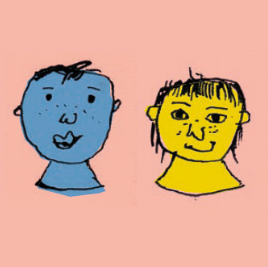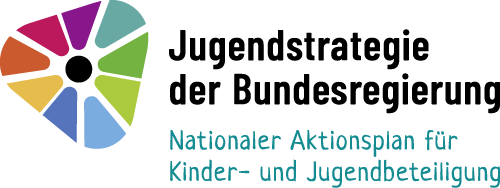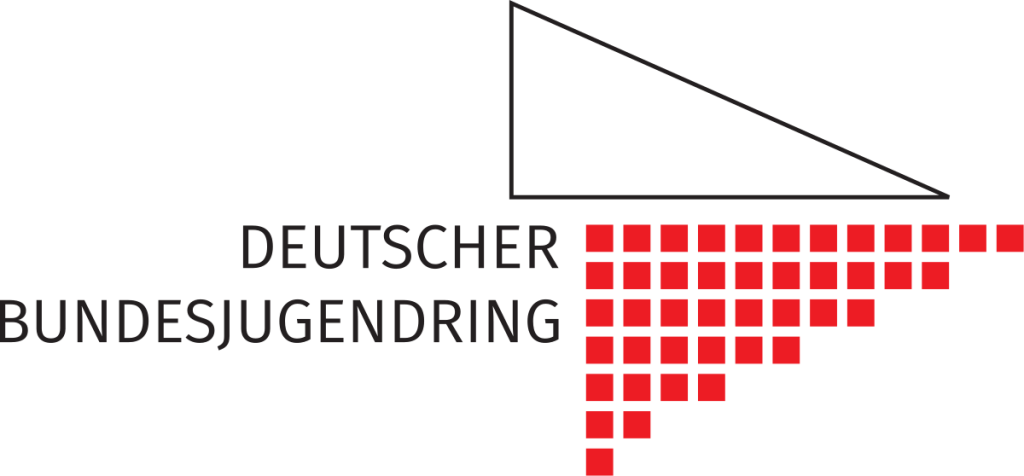
5.2 Quality standards crossing fields of action
5.2.1 Participation needs supportive institutional and societal framework conditions
Societal and institutional acknowledgement is a precondition for successful participation: Involvement of children and adolescents only succeeds if it is acknowledged and appreciated by the decisive societal actors in particular in politics, administration and the pedagogic institutions.
In the offers and institutions, a participation-orientated culture which is supported by the full-time, part-time and honorary actors is needed: Involvement processes of children and adolescents must be wanted and supported by the full-time, part-time and honorary actors. A participation-orientated attitude is encouraged by processes of human resource development and recruiting and also organisation development.
Children and adolescents are always involved in all decisions which affect them: The objective must be to involve children and adolescents as a matter of course and effectively in decisions which affect them. This succeeds if their voices and opinions on all topics and contents which affect them are included on all levels of politics, administration and practice. This inclusion takes place by successful, high-quality and effective participation processes. This can also mean incorporating children and adolescents with equal entitlement in existing panels or creating or incorporating self-representation structures for young people.
Where participation is offered, a voice, cooperation or co-determination must be possible, There is clarification with the children and adolescents involved how much influence they can have within the participation process and how their role is seen on the part of the decision-makers: for example as an idea generator, lobbyist or participator.
Participation of children and adolescents presupposes institutional and structural openness: A condition for participation of children and adolescents is that there are at least consultation, even the constellation in question and they are also acknowledged by everyone.
Participation of children and adolescents is encouraged by reliable framework conditions: Reliable framework conditions relate here to supporting, if applicable accompanying partners and contacts to start with. In some constellations, an active network is necessary in order to support participation of young people and to use the synergetic effects of differing actors. The coordination of the networks has been ensured and there are rules of cooperation which can be understood by everyone. This guarantees a long-term binding, reliable contact partners and structures.
Temporal, financial, geographical and personnel resources are available in sufficient quantities and with planning security: They are used in order to guarantee the organisational framework conditions and to enable the highest possible degree of self-organisation of participation processes.
5.2.2 Participation includes all young people
A variety of methods matching the topics and the target groups are available and can be used: The methods used in the participation process match the development and education status of the target group and the topics and contents to be negotiated. The methods are chosen such that they do not contribute to isolation of children and adolescents or discriminate them. They are varied, address differing senses and are suited to encourage children and adolescents to become active. In the contents, children and adolescents must be taken seriously with their requirements and causes and feel taken seriously. Expressly, it is a matter of designing participation processes inclusively and verifying them with a view to possible barriers to integration and of knocking them down if applicable.11
The offers are easily accessible and varied: Differing requirements depending on age, gender, handicap or impairment, social, cultural or ethnic origin and education status are taken into account and existing barriers are knocked down. There is assurance that all children and adolescents who wish to participate are also given the possibility of doing so. Matching including accesses and approaches are necessary. The offers should therefore be bound to spaces or places in which young people move anyway, i.e. designed close to the world of their lives.
The information and the procedure are equitable, comprehensible and reasonable for all parties: From the outset, all the parties are given the information which is important for the process in a way which is understandable for them. It is also important that there is clarity about the possibilities and limits of the participation from the outset and that it is made transparent which rules and conditions are set by whom.
The topics are significant for children and adolescents: Children and adolescents can participate in all decision-making processes which are concerned with topics relevant for them and close to their world. They decide independently and actively whether they wish to participate.
Digital forms of participation can extend the range of possibilities of participation: With digital forms of participation, more children and adolescents can be reached independent of the location and in a short period of time on the one hand and on the other possibly also those who otherwise could not or would not perceive their right to participation. They are thus a valuable instrument in order to develop new possibilities of participation and to extend existing formats. They are neither competition nor replacement for analog forms of participation. All quality standards valid for analog participation processes must be taken into account.
5.2.3 Participation needs qualification
Qualification ensures that all the actors involved possess the necessary competences for the organisation of involvement projects: Qualification offers and possibilities of further training are provided for all the groups involved in the process.
Personnel competences such as authenticity and demeanour, competences with a view to methods for involvement of the target group in question, communicative competences such as the ability to motivate others, ability to deal with conflicts, empathy and innovation capacity with a view to changing target groups and requirements as well as objective competences for the organisation of involvement projects are taught to all actors setting the agenda, accompanying and supporting.
The adults are supported in concerning themselves with their own role in the involvement process, developing an attitude encouraging involvement and getting to know involvement methods.
Children and adolescents are likewise supported as necessary in the development of participation and democracy competences by adequate offers of qualification and accompaniment.
5.2.4 Participation is transparent
The objectives, conditions, possibilities and limits of involvement processes are transparent from the outset and have been made comprehensible for all target groups: All parties are addressed matching the target group and informed about the current status of the process. There is space for openness in the involvement process, also with a view to the results, but also their limits. The objectives and results are recognisable, transparent for all parties and are implemented promptly in the ideal case. If the implementation is nor prompt, all the parties are informed about the reasons for the delay.
All parties are involved in the process from the start to the end: Successful involvement processes excel thanks to an extensive continuity of all actors.
The voices of all people involved in the process are equivalent: There is no distinction by age or status as to who is involved in which intensity: all the parties are taken equally seriously.
Stipulated objectives are regularly verified and updated: For long-term decisions, part objectives are formulated in order to make interim results visible. The decisions after the conclusion of a process are disclosed promptly: all the parties experience self-effectivity as a result of the comprehensibility of the process steps and disclosure of the decisions, even if a process does not have to turn out to everyone’s satisfaction.
A timeframe clearly limits the process: The project is limited by a clear start and end point, the sequences are known to and comprehensible for all those involved. A prompt implementation of the project, easy to understand for children and adolescents, and – as far as possible – of the results is guaranteed.
Protection of personal data and children’s and adolescents’ (media) protection are guaranteed: A precondition of analog and also above all digital involvement processes with children and adolescents is acknowledgement and implementation of the General Data Protection Regulations (GDPR) and ensuring children’s and adolescents’ protection and children’s and adolescents’ media protection. At the same time, data protection and children’s and adolescents’ (media) protection may not be instrumentalised as excuses for rejection of possibilities of involvement.

5.2.5 Participation is verified
Participation is based on a broadly based binding foundation, which formulates strategic steps and verifiable objectives: All the institutions and actors involved in the process are included in the design of the involvement process and agree to it. The effectivity of involvement is observed on the basis of binding, jointly produced quality standards and objectives which have been stipulated jointly beforehand. In the best case, the effectivity of the involvement is evaluated subsequently on the basis of questioning the parties and documented results. The results can be used for further development of future involvement processes.
Participation is to be designed as a learning process open to experience: Both conceptionally and also methodically, involvement processes are to be designed such that adjustment to the interests and needs of children and adolescents and experiences which have been gained are possible in the process. Involvement processes are to be designed as processes of joint learning opening the way for children and adolescents to include their experiences.
Involvement processes are evaluated after completion: After completion of involvement processes, they are evaluated both with a view to their results and also with a view to the method and the structural framework conditions of the people involved and affected. Attention is to be paid to formats matching the age and life situation.
Children and adolescents cooperate in the evaluation of involvement processes: The evaluation of involvement processes with a view to fulfilment of the quality standards and their results is a genuine task for the experts to start with. But it can only be done purposefully if the children and adolescents involved in the process are included in a way matching their age and life situation. Development of pertinent strategies, guiding questions and formats is needed.
Involvement processes and their results are documented: To be able to learn from involvement processes, they are documented and made publicly accessible. Not only the world of experts is to be addressed, but also children and adolescents, who can be encouraged and motivated by such documentations.



